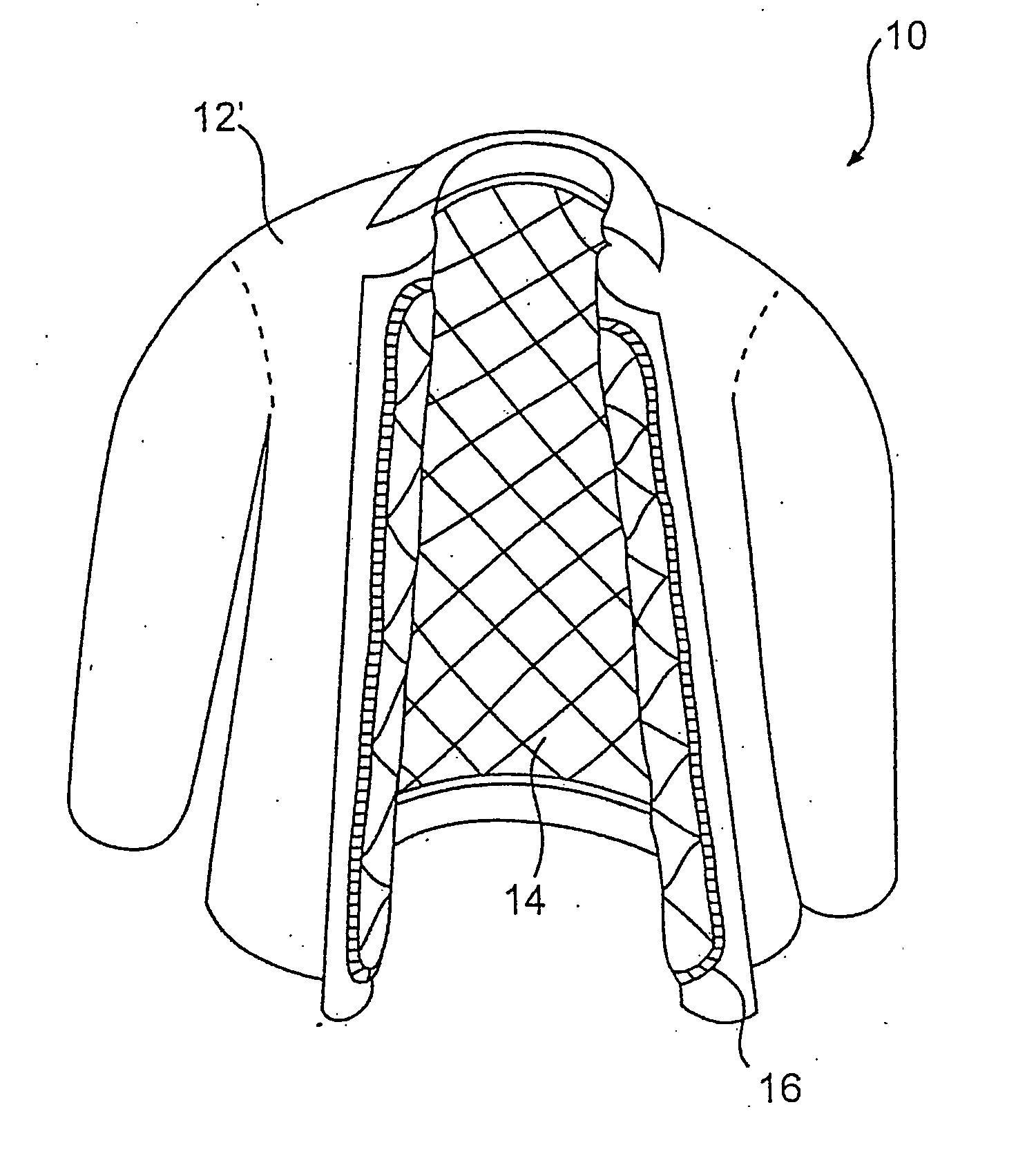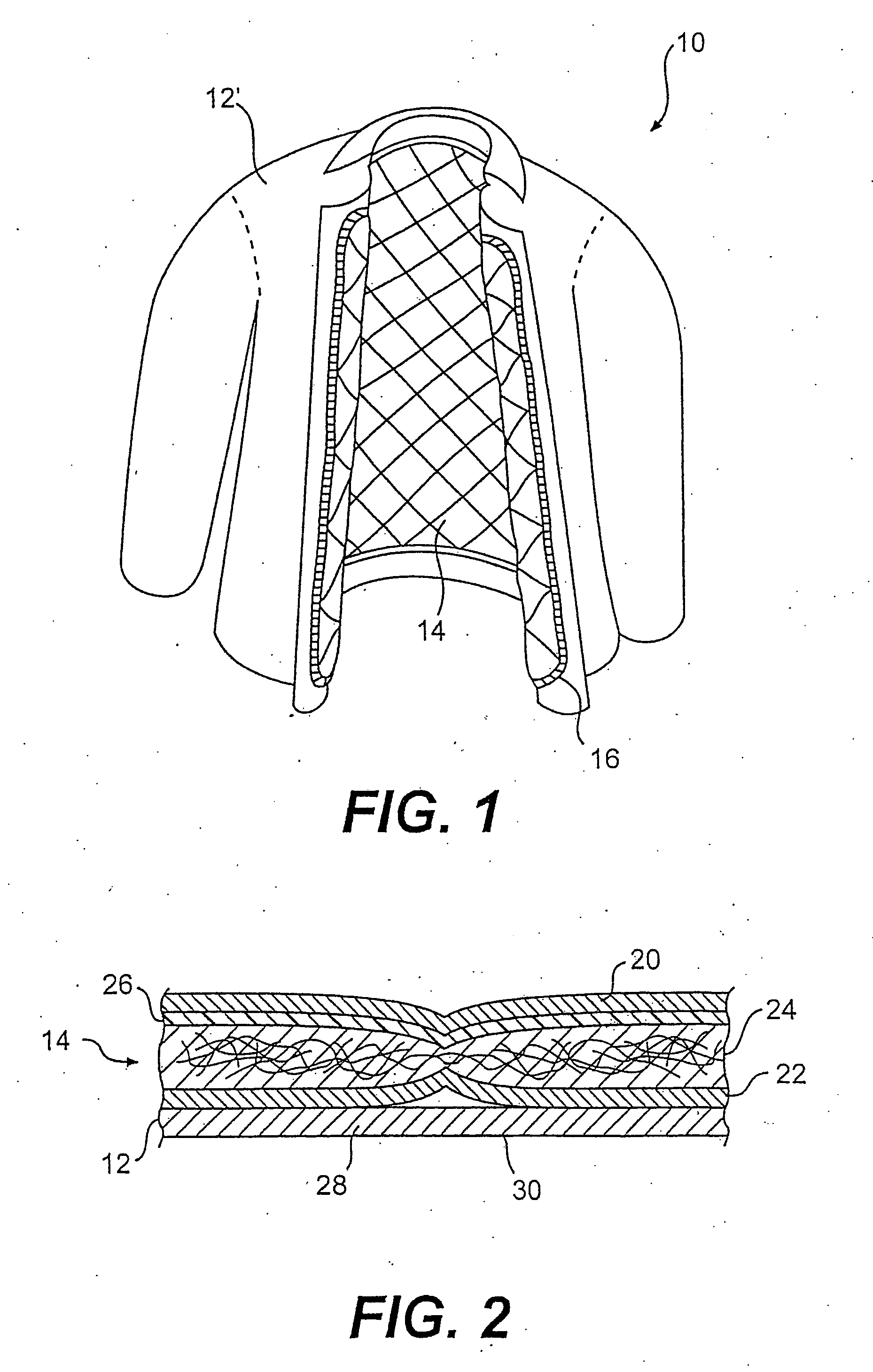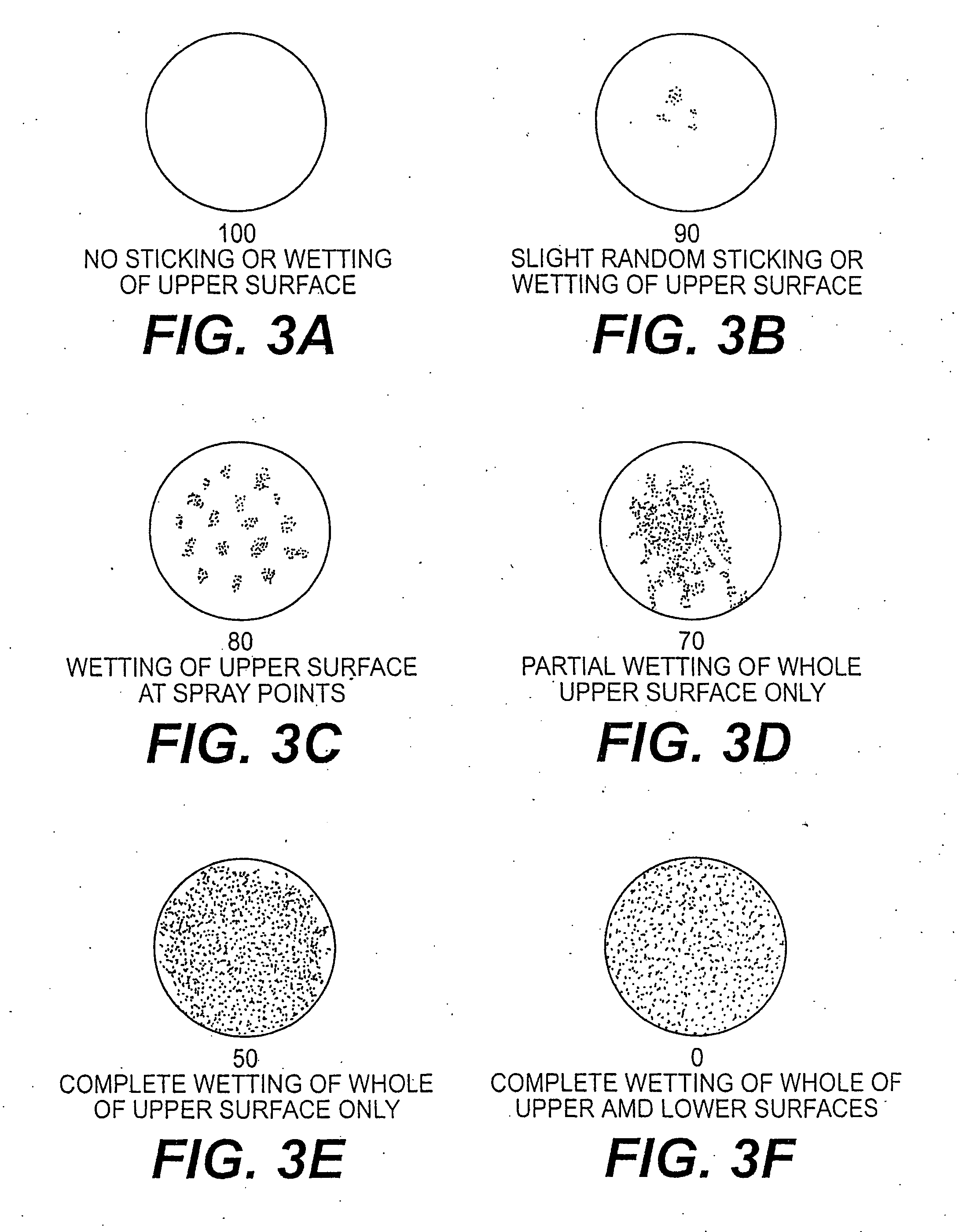Water resistant protective garment for fire fighters
a protective garment and fire fighter technology, applied in the field of protective garments, can solve the problems of preventing the garment from absorbing and retaining moisture, fire fighter garments can become wet during use, and protective garments worn by fire fighters are usually wet during us
- Summary
- Abstract
- Description
- Claims
- Application Information
AI Technical Summary
Benefits of technology
Problems solved by technology
Method used
Image
Examples
example no.2
EXAMPLE NO. 2
[0109] A woven fabric similar to the one described in Example No. 1 above was coated with a water resistant composition as described in Example 1. In this example, however, the composition applied to the fabric did not contain an emulsifier but contained more fluorocarbon polymer.
[0110] The treated fabric was tested for water repellency, oil repellency and spray tested initially and after 10, 20 and 30 laundry cycles. All the tests were conducted according to the procedures described above. A sample was tested both before and after being pressed with a hand held iron. The following results were obtained:
TABLE 6Water Repellency, Oil Repellency and Spray Test Resultsof a Fabric Made According to the Present InventionBeforeAfterPressingPressingLaunderingswateroilspraywateroilsprayInitial66100 ———10659065100206580-9066100305-64-58065100
[0111] As shown above, the treated fabric produced according to this example performed exceptionally well. In particular, the fabric had ...
example no.3
EXAMPLE NO. 3
[0112] The following tests were performed in order to compare the performance of a fabric made according to the present invention in comparison to commercially available fabrics with respect to water absorption.
[0113] A woven fabric similar to the one described in Example No. 1 above was coated with a water resistant composition as described in Example No. 1. The composition contained a fluorocarbon polymer, isopropanol, acetic acid and water. The flurocarbon polymer used was a dispersion of perfluroalkyl and polyisocyanate polymers.
[0114] The treated fabric was tested for water absorbtion initially and after five laundry cycles. All the tests were conducted according to the procedures described above.
[0115] Besides a fabric made in accordance with the present invention, commercially avaliable fabrics were also tested. Specifically, the commercially avaliable fabrics tested included STANDARD PBI GOLD obtained from Southern Mills, NOMEX OMEGA obtained from Springs Ind...
example no.4
EXAMPLE NO. 4
[0117] The following tests were performed in order to compare the dynamic water absorption characteristics of a fabric made according to the present invention in comparison to commercially avaliable fabrics.
[0118] The treated fabric described in Example No. 3 above was tested for dynamic water absorption according to the tests described in the specification. Specifically, the sample was tested initially, after ten laundry cycles, and after twenty laundry cycles. STANDARD PBI GOLD fabric and ADVANCE fabric obtained from Southern Mills were also tested. The following results were obtained:
TABLE 8Dynamic Water Absorption ResultsInitialAfterAfterDynamicTenTwentyWaterLaundryLaundryAbsorptionCyclesCyclesSampleRating (%)(%)(%)No. 18.37.010.5STANDARD10.822.837.1PBI GOLDADVANCE6.820.822.1
[0119] As shown above, the sample made according to the present invention (designated Sample No. 1 above) had better dynamic water absorption characteristics than the commercially avaliable f...
PUM
| Property | Measurement | Unit |
|---|---|---|
| dynamic water absorption rating | aaaaa | aaaaa |
| dynamic water absorption rating | aaaaa | aaaaa |
| water absorption | aaaaa | aaaaa |
Abstract
Description
Claims
Application Information
 Login to View More
Login to View More - R&D
- Intellectual Property
- Life Sciences
- Materials
- Tech Scout
- Unparalleled Data Quality
- Higher Quality Content
- 60% Fewer Hallucinations
Browse by: Latest US Patents, China's latest patents, Technical Efficacy Thesaurus, Application Domain, Technology Topic, Popular Technical Reports.
© 2025 PatSnap. All rights reserved.Legal|Privacy policy|Modern Slavery Act Transparency Statement|Sitemap|About US| Contact US: help@patsnap.com



